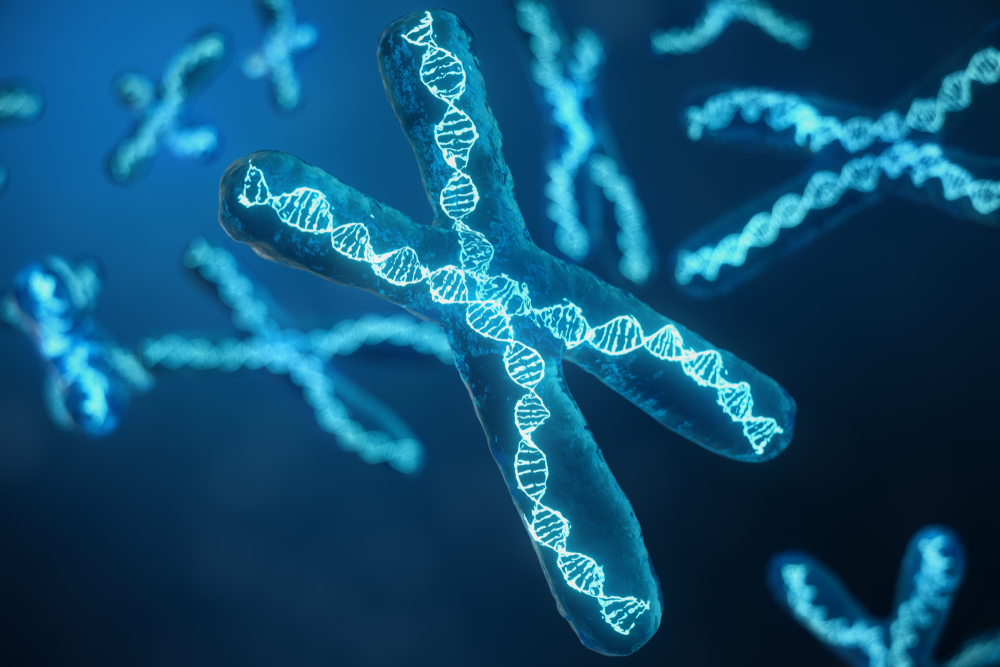
Summary
NIPT is a blood test that looks for common genetic conditions in early pregnancy. It is most often used to look for chromosomal disorders that are caused by changes in the number of chromosomes due to an extra or missing copy of a chromosome.
Why get tested?
NIPT is used to assess the risk of a baby being affected by Down syndrome or other common chromosomal disorders. NIPT can detect an extra copies of chromosome 21 (Down syndrome), chromosome 18, chromosome 13 and extra or missing copies of the the sex chromosomes (X and Y chromosomes).
Chromosomes are located in the nucleus of our cells. They contain most of our DNA. Each cell normally contains 23 pairs of chromosomes. Most chromosome abnormalities occur in the egg or sperm as a result of an error during cell division, but sometimes this can happen after conception.
If you receive a positive NIPT result, the diagnosis will need to be confirmed by an invasive diagnostic test such as amniocentesis or chorionic villus sampling of tissue or amniotic fluid. This will provide a definitive answer on the chromosome makeup of fetal cells either by a karyotype test or a microarray test.
NIPT is available to all women during pregnancy. It has been assessed as a useful screening tool in pregnancies where the following risk factors are present:
NIPT is widely available through most pathology laboratories and many pregnant women are opting to have non-invasive prenatal testing regardless of their risk factors.
The test
There are DNA fragments known as cell-free DNA that circulate freely in our bloodstream. They are released by cells during normal cell turnover – our cells naturally die off and are replaced with new ones. During pregnancy, some DNA fragments are passed from the baby in the womb, specifically from cells that make up the outer layer of the placenta, into the mother’s bloodstream.
NIPT measures the amount of DNA from the baby circulating in the mother’s blood. More specifically, it measures the quantity of foetal DNA coming from chromosomes 21,13,18, X and Y.
If the baby has an extra copy of one of these chromosomes, the test can measure the excess amount of DNA in the mother’s blood. This way, NIPT is able to detect chromosome conditions such as Down syndrome (due to an extra copy of Chromosome 21 (trisomy 21), Patau syndrome (trisomy 13), Edward syndrome (trisomy 18) and sex chromosome abnormalities such as Turner and Klinefelter syndromes. Trisomy is the term meaning an extra copy of a chromosome.
Having the test
Sample
A blood sample is required and collected after 10 weeks of gestation.
Preparation
None
Your results
NIPT has better performance than other first or second trimester blood tests used for Down syndrome screening which are based on measuring the concentration of several biochemical markers in the mother's blood.
It has a sensitivity of about 99.5 per cent for detecting Down syndrome. In other words, fewer than one case in 100 will be missed by the test. It also has a very high specificity – which means there are few false-positive results. For example, when NIPT is used in pregnancies that have a very high risk of Down syndrome (trisomy 21), false-positive results are rarely seen, although still possible.
However, for women who are in a lower risk group such as younger women, it is known that false-positive and false-negative result rates will be higher. Also, the sensitivity and specificity of the test are not as good for rarer chromosomal disorders such as trisomy 13 and 18 and sex chromosome disorders. They are lower still for microdeletion syndromes that are very small and difficult to detect.
First trimester blood test and a 12-week ultrasound scan are recommended to look for other structural or chromosomal abnormalities.
Very infrequently NIPT may not give a result when there is insufficient DNA from the baby in the mother’s blood sample. This is more likely if the test is conducted in very early pregnancy. Test failure may also occur when someone has a high BMI. In this case there is a lower amount of fetal DNA. Many women will be able to get a result if blood is redrawn at a later gestation time.
Any more to know?
NIPT is available primarily through private laboratories. It is not covered by Medicare or private health insurance.
Many pathology laboratories in Australia offer blood specimen collection for NIPT but may either do the test themselves or send the sample to one of the specialist laboratories, for testing. Depending on where the testing is done the results may take five to 14 days.
Questions to ask your doctor
The choice of tests your doctor makes will be based on your medical history and symptoms. It is important that you tell themeverything you think might help.
You play a central role in making sure your test results are accurate. Do everything you can to make sure the information you provide is correct and follow instructions closely.
Talk to your doctor about any medications you are taking. Find out if you need to fast or stop any particular foods or supplements. These may affect your results. Ask:
More information
Pathology and diagnostic imaging reports can be added to your My Health Record. You and your healthcare provider can now access your results whenever and wherever needed.
Get further trustworthy health information and advice from healthdirect.
What is Pathology Tests Explained?
Pathology Tests Explained (PTEx) is a not-for profit group managed by a consortium of Australasian medical and scientific organisations.
With up-to-date, evidence-based information about pathology tests it is a leading trusted source for consumers.
Information is prepared and reviewed by practising pathologists and scientists and is entirely free of any commercial influence.